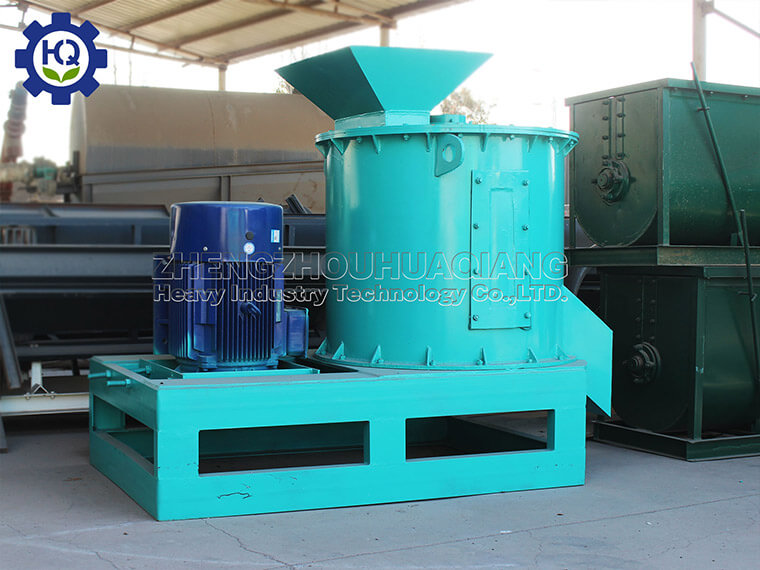The granulation process of an annual production line of 20000 tons of chicken manure organic fertilizer:
The granular organic fertilizer production line with an annual output of 20000 tons of chicken manure includes a stacker – vertical crusher – drum screening machine (optional here) – batching machine and horizontal mixer (optional equipment) – disc granulator – dryer and cooling machine – drum screening machine – round throwing machine (optional) – coating machine (optional) – single bucket packaging machine..jpg)
With an annual output of 20000 tons and a large scale, it is possible to consider using a granular fertilizer production line. The granular fertilizer production line includes two important processes, fermentation and granulation.
Fermentation process for the production of chicken manure organic fertilizer:
Mix chicken manure, straw, mushroom residue, and other materials together, add fermentation agents, and under the action of the fermentation agents, the material pile will generally heat up in about 2 days. At this time, flipping equipment can be used to flip the pile to increase the oxygen content and moisture content of the material pile. If local environmental protection is strict, horizontal fermentation tanks can be used for fermentation. The fermentation process in horizontal fermentation tanks is fully sealed and contains deodorization devices, which will not cause environmental pollution.
Granulation process of chicken manure organic fertilizer production line:
After sufficient fermentation and maturation, the material enters the granulation process. The finer the material, the better the shape of the produced particles. Therefore, it is necessary to first use a vertical crusher for crushing, and then use a drum screening machine to screen. Materials with unqualified dimensions enter the crushing process again, and qualified materials enter the organic fertilizer granulator. An annual output of 20000 tons of granular fertilizer. It is recommended to use disc granulators, toothed granulators, etc. for circular particles, and flat mold granulators and roller extrusion granulators are recommended for cylindrical particles. After the granulation is completed, the screening machine is used again for screening. Unqualified particle materials enter the crushing granulation process again, and qualified particles enter the packaging machine.
The production process of fermentation and granulation is relatively simple, but equipment selection is important. Stable performance and well-designed equipment can not only avoid production accidents, but also improve the quality of organic fertilizers.
.jpg)



.jpg)
.jpg)


.jpg)